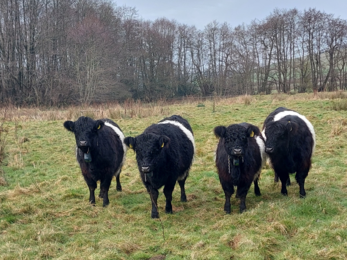Hello, I’m D’yani, Radnorshire Wildlife Trust’s Habitat management trainee 2024-2025. It's nice to meet you! As I'm coming to the end of my traineeship, I want to recap my experience to inspire someone else to take up the position.
To start with, what interested me in taking on this adventure. I guess I have always had a connection with nature and outdoors, as many of us have had, living in the Welsh or any countryside. Growing up I was entrenched in nature, making mud cakes, climbing trees and walking around in the rivers. As I matured, I started looking closer, photographing lichens, skylines from trees and butterflies. By the time I was in university, and I delved into my studies, I participated in the botanical society, which engaged in monthly walks to identify the seasonal plants in our local park. At the end of my first year, I was lucky to shadow a conservationist. This exposed me to the possibility of working within conservation and a way to gain practical experience. The job entailed tree maintenance, identification and wonderful sunlight.
So, when I finished my geography degree and moved back home, I knew that maintaining this knowledge and developing it deeper was my goal. This traineeship was exactly that and more! Despite my foundation, I do believe this position or anything similar within the trust is always a brilliant springboard for those looking to work outdoors in nature and conservation.









